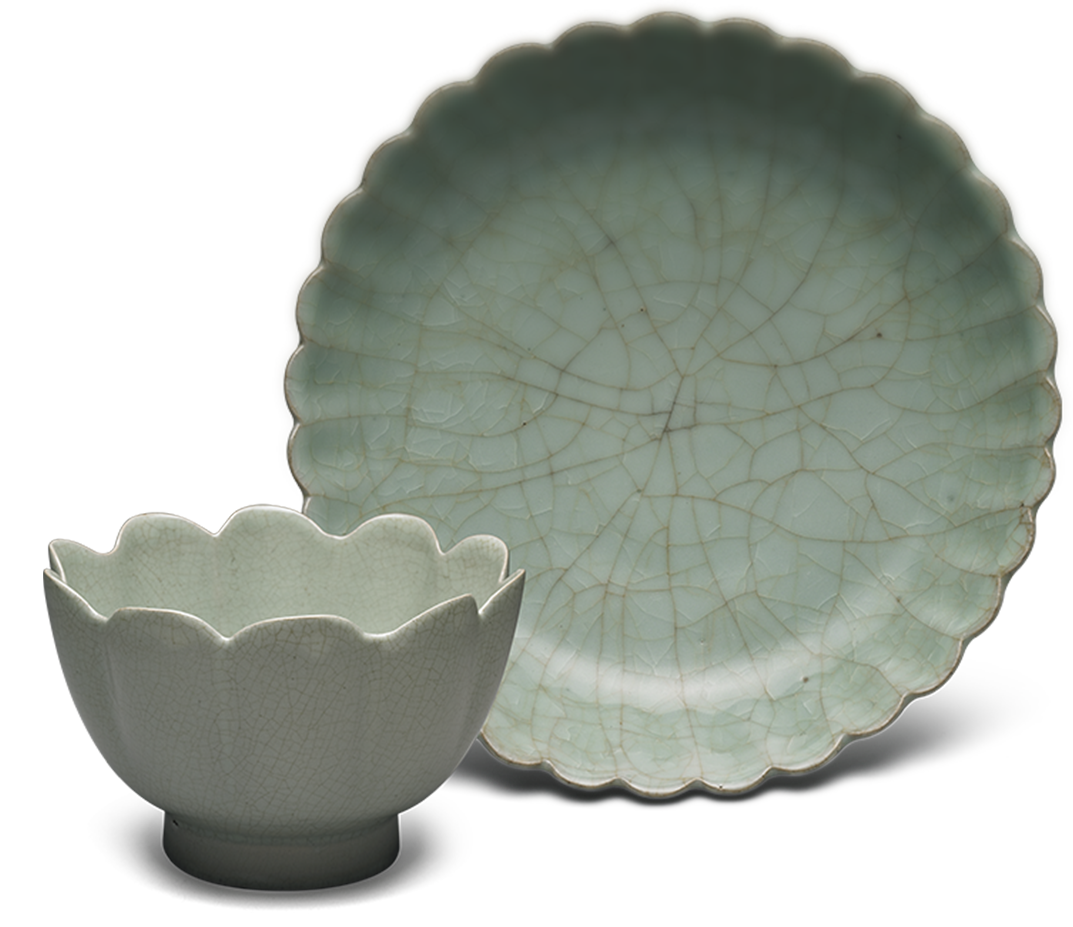In the waning years of the Northern Song, Jin dynasty armies attacked the capital of Bianjing (modern Kaifeng City, Henan Province) and captured Emperor Emeritus Huizong and Emperor Qinzong, marking the end of the Northern Song. Remnants of the court, however, managed to escape south, later establishing a capital they called Lin'an ("Temporary Peace," modern Hangzhou) in what is known in history as the Southern Song. To reestablish legitimacy and authority, the Southern Song court followed the example of Northern Song institutions, one of which was to establish kilns to fire porcelains. At Xiuneisi, the porcelains were "modeled in refined clay and exceptionally exquisite, their glaze colors translucently lustrous and prized throughout the land." As for those from the Jiatanxia kilns, they were "no match compared to the wares of old." These official porcelains are today called "Southern Song Guan wares."
Archaeological excavations in Hangzhou City, Zhejiang Province, led to the discovery of the Jiaotanxia kilns, and the Laohudong kilns were also found in the vicinity of Phoenix Mountain. Following analysis of pieces recovered from the kiln openings at these two sites, one of them probably corresponds to the Jiaotanxia official kiln recorded in texts, while the other is perhaps the Xiuneisi official kiln. These two kilns began operation at different times, but their period for firing porcelains overlapped. Among surviving porcelains from the former Qing court collection now in the National Palace Museum, some indeed accurately reflect the product types seen from pieces recovered at those two kiln sites. However, there are still some examples that defy comparison and are even more refined in terms of quality, suggesting the possibility of another as yet undiscovered Southern Song official kiln site.


.jpg)
.jpg)
.jpg)
